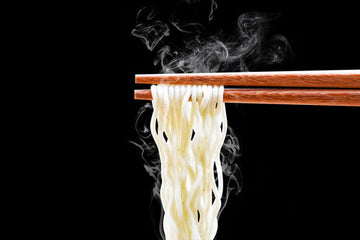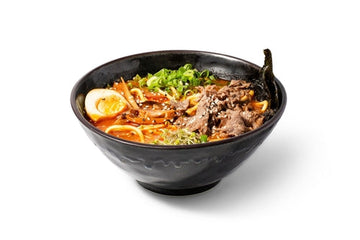Ramen is one of the world’s most beloved comfort foods, but if you're keeping an eye on your diet, you might be wondering: how many calories are in ramen noodles? Whether you're slurping down a bowl of instant noodles at home or dining out at a place like Yume FL, understanding the calorie content—and the nutritional value—can help you make more informed and satisfying choices.
Let’s dig into everything you need to know about ramen noodles calories, from instant packs to gourmet restaurant bowls.
Understanding Ramen Noodles: Instant vs. Fresh
What Are Instant Ramen Noodles?
Instant ramen noodles are the pre-cooked, shelf-stable packs you'll find in the grocery store. Typically fried or air-dried, these noodles are designed for quick preparation, usually by boiling in water for a few minutes. They often come with a seasoning packet that packs a lot of flavor—and sodium.
What Are Fresh Ramen Noodles?
Fresh ramen noodles, like those served at ramen restaurants or made from scratch at home, are usually made with wheat flour, water, salt, and an alkaline ingredient like kansui, which gives ramen its chewy texture and yellow color. These noodles are not pre-cooked and must be boiled before serving.
Key Differences That Affect Calorie Count
The main difference lies in preparation and ingredients. Instant noodles often contain added fats from the frying process, while fresh noodles may have fewer additives. Additionally, toppings and broth can drastically alter ramen noodles calories depending on how they're prepared.
Ramen Noodles Calories: The Breakdown
Calories in Instant Ramen (Dry Packaged)
With Seasoning Packet
A typical package of instant ramen (like Maruchan or Nissin) contains around 380 to 450 calories per serving with the seasoning packet. The packet often includes salt, sugar, MSG, and fat, which can bump up the calorie count.
Without Seasoning Packet
If you discard the seasoning packet and use your own broth or spices, the calorie count drops significantly—down to 180 to 220 calories for just the noodles. However, the flavor might not be as bold unless you supplement with healthy herbs or broth alternatives.
Calories in Restaurant-Style Ramen (Like Yume’s)
Broth Base (Tonkotsu, Shoyu, Miso, etc.)
The broth base is a major contributor to ramen noodles calories. Here’s a quick comparison:
-
Tonkotsu (Pork Bone Broth): 200–300 calories per bowl
-
Miso Broth: 150–250 calories
-
Shoyu (Soy Sauce Broth): 100–200 calories
-
Shio (Salt Broth): 80–150 calories
Tonkotsu is the most calorie-dense due to its fatty, collagen-rich ingredients.
Noodle Type and Portion Size
Restaurants like Yume FL typically serve fresh, house-made noodles. A standard portion (about 5 oz cooked) adds 200–300 calories. Some restaurants offer small, regular, or large sizes, which can increase the calorie count significantly.
Toppings and Add-ons (Eggs, Pork Belly, etc.)
Toppings are where calories can skyrocket:
-
Chashu Pork Belly: +150–250 calories
-
Soft-Boiled Egg: +70–90 calories
-
Bamboo Shoots, Green Onions, Seaweed: +10–30 calories each
-
Corn, Butter, Cheese: +50–100 calories depending on quantity
A fully loaded ramen bowl can reach 600 to 1,000+ calories.

Are Ramen Noodles Healthy? Nutrition Beyond Calories
Macronutrients: Protein, Fat, and Carbs
Ramen is typically high in carbohydrates, moderate in fat, and low to moderate in protein, depending on the ingredients. Instant noodles can contain 15–20g of fat and only 7–10g of protein, while restaurant ramen can offer up to 20g of protein with the right toppings.
Sodium Levels and What to Watch For
Instant ramen is notoriously high in sodium—some packs contain over 1,500mg, which is more than half the recommended daily limit. Restaurant ramen also contains a fair amount of sodium, but using a lighter broth and limiting the soup base can help.
Tips for Making Ramen a Healthier Choice
-
Use less seasoning: Opt for low-sodium broth or DIY seasoning.
-
Add vegetables: Spinach, bok choy, mushrooms, and carrots boost fiber and nutrients.
-
Choose lean proteins: Grilled chicken or tofu instead of fatty pork.
-
Control portion size: Share a large bowl or take half to-go.
Visit Yume FL
At Yume FL, we’re passionate about crafting ramen that’s both flavorful and balanced. Whether you’re craving a rich tonkotsu or a lighter veggie miso, our menu offers something for every palate and dietary preference.
Ready to find your perfect bowl? Contact us and explore our menu today!





